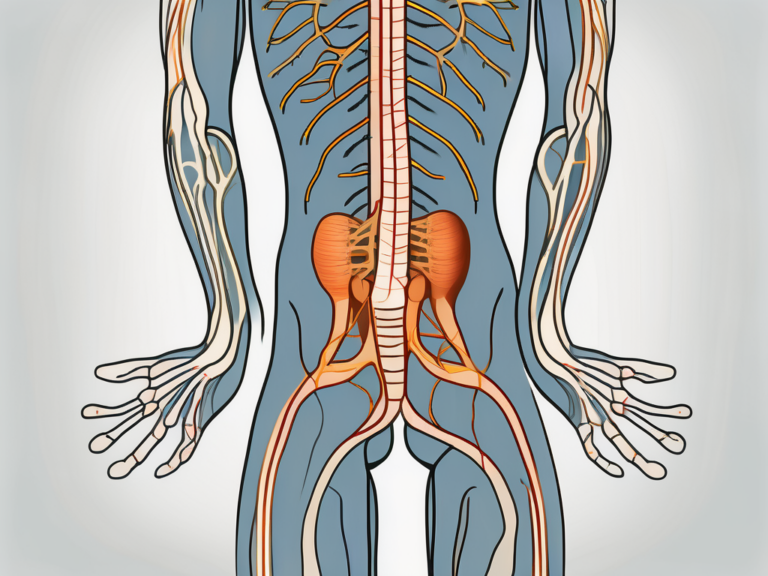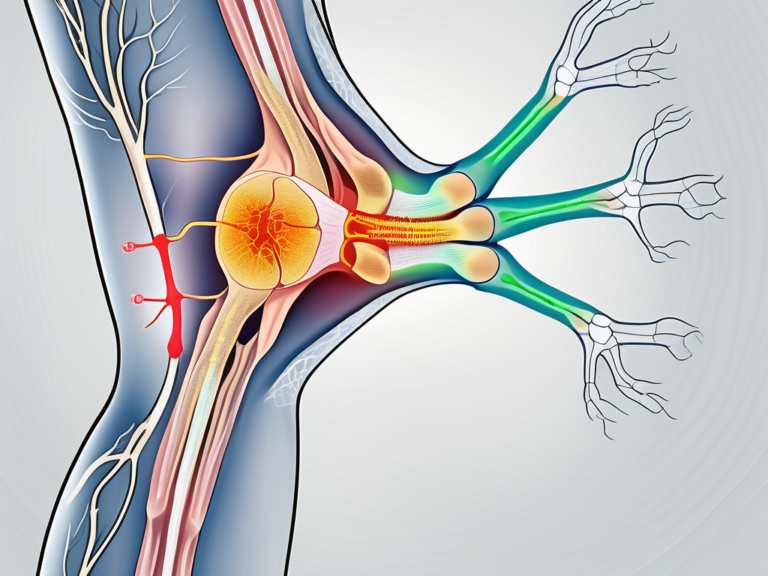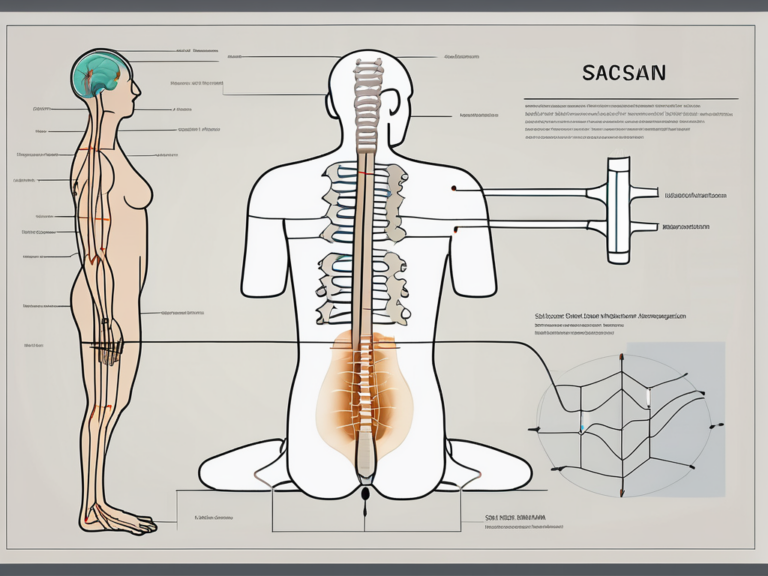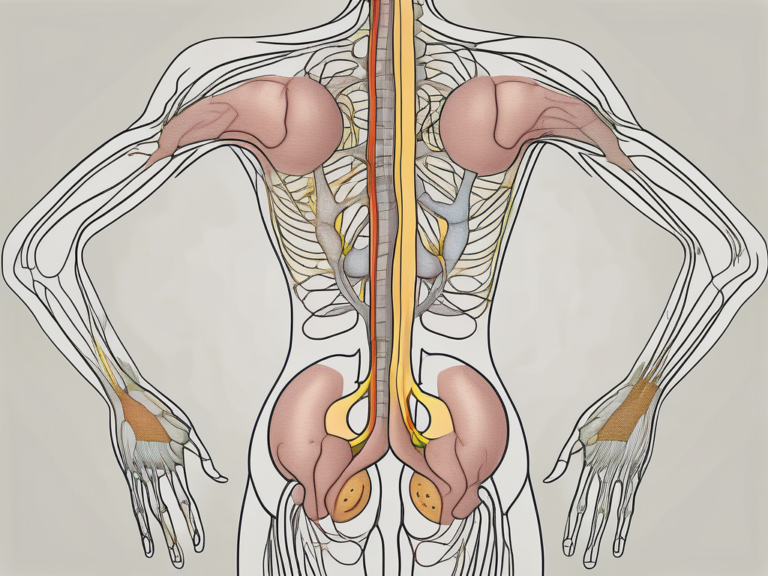What Type of Doctor Should You See for a Lumbo-Sacral Nerve Block?
If you are considering a lumbo-sacral nerve block, it is important to understand that this procedure is typically performed by medical specialists who have expertise in the anatomy and treatment of the lumbo-sacral region. In this article, we will explore the different types of doctors you should consider consulting for a lumbo-sacral nerve block, as well as factors to consider when choosing the right doctor and how to prepare for the procedure. It is important to note that the information provided here is for informational purposes only and should not be construed as medical advice. Consulting with a healthcare professional is essential for an accurate diagnosis and appropriate treatment plan.
Understanding Lumbo-Sacral Nerve Block
A lumbo-sacral nerve block is a minimally-invasive procedure that involves the injection of medication near the lumbo-sacral nerves located between the lower spine and the tailbone. This procedure is primarily used to alleviate pain and inflammation in the lower back, buttocks, and legs caused by conditions such as sciatica, herniated discs, spinal stenosis, or other nerve-related problems in the lumbo-sacral region. Before undergoing a lumbo-sacral nerve block, it is important to have a clear understanding of the anatomy of the lumbo-sacral region and the purpose of the procedure.
The Anatomy of the Lumbo-Sacral Region
The lumbo-sacral region refers to the lower part of the spine, where the lumbar vertebrae (lower back) meet the sacrum (a triangular bone located below the lumbar vertebrae). This area is home to the lumbo-sacral nerves, which branch out from the spinal cord and extend to the lower body. Understanding the intricate network of nerves and their relationship to the surrounding structures is crucial in performing a lumbo-sacral nerve block effectively.
The lumbo-sacral nerves play a vital role in transmitting sensory and motor signals between the lower body and the central nervous system. These nerves are responsible for the sensation and movement of the lower back, buttocks, and legs. When these nerves become compressed or irritated due to various conditions, it can result in debilitating pain and discomfort.
Within the lumbo-sacral region, there are also important structures such as the intervertebral discs, which act as shock absorbers between the vertebrae, and the facet joints, which provide stability and allow for smooth movement of the spine. The lumbo-sacral nerve block targets the specific nerves in this region, aiming to alleviate pain and inflammation without affecting the surrounding structures.
The Purpose of a Lumbo-Sacral Nerve Block
A lumbo-sacral nerve block aims to provide temporary pain relief by interrupting the transmission of pain signals along the affected nerve pathways. By blocking the nerve signals, inflammation and pain in the lumbo-sacral region can be reduced, allowing patients to experience improved mobility and a better quality of life. While the effects of a lumbo-sacral nerve block may vary for each individual, it can be an effective option in managing chronic pain caused by lumbo-sacral nerve issues.
During the procedure, a local anesthetic and a corticosteroid medication are typically injected near the targeted nerves. The local anesthetic numbs the area and provides immediate pain relief, while the corticosteroid helps to reduce inflammation and provide longer-lasting relief. The combination of these medications can help patients regain functionality and engage in physical therapy or other rehabilitative measures.
It is important to note that a lumbo-sacral nerve block is not a permanent solution for underlying conditions causing lumbo-sacral nerve pain. It is a temporary measure that can provide relief while other treatments, such as physical therapy, medication, or surgery, are explored. The duration of pain relief varies from patient to patient, with some experiencing relief for weeks or months, while others may require repeated injections for sustained benefits.
Before undergoing a lumbo-sacral nerve block, patients should have a thorough discussion with their healthcare provider to understand the potential risks, benefits, and alternatives. It is crucial to have realistic expectations and to follow post-procedure instructions carefully to maximize the effectiveness of the nerve block and minimize any potential complications.
Different Types of Medical Specialists
When considering a lumbo-sacral nerve block, it is important to consult with medical specialists who have expertise in the diagnosis and treatment of conditions affecting the lumbo-sacral region. Here are three types of doctors you may consider:
Role of a Neurologist
Neurologists are medical doctors who specialize in the diagnosis and treatment of disorders of the nervous system, including those affecting the lumbo-sacral region. They have expertise in identifying the underlying cause of nerve-related pain and can recommend appropriate treatment options, including lumbo-sacral nerve blocks. Consulting with a neurologist can provide you with valuable insight into the nature of your condition and help guide your treatment plan.
Neurologists undergo extensive training to become experts in the field of neurology. They are skilled in conducting thorough neurological examinations, which may involve assessing your reflexes, muscle strength, and sensation. By carefully evaluating your symptoms and medical history, neurologists can determine if a lumbo-sacral nerve block is the most suitable course of action for your specific condition.
In addition to lumbo-sacral nerve blocks, neurologists may also recommend other non-surgical treatments such as physical therapy, medication management, or alternative therapies like acupuncture. They are dedicated to providing comprehensive care and improving your overall quality of life.
Role of an Orthopedic Surgeon
Orthopedic surgeons specialize in diagnosing and treating conditions affecting the musculoskeletal system, including the spine. They are skilled in performing surgical procedures to address spinal issues, including those that may benefit from a lumbo-sacral nerve block. An orthopedic surgeon can assess your condition and determine if a lumbo-sacral nerve block is an appropriate treatment option or if surgery may be required.
Orthopedic surgeons receive extensive training in both surgical and non-surgical treatments for musculoskeletal conditions. They may use advanced imaging techniques, such as X-rays or MRI scans, to accurately diagnose the source of your pain. If a lumbo-sacral nerve block is recommended, the orthopedic surgeon can perform the procedure with precision, ensuring optimal pain relief.
In cases where surgery is necessary, orthopedic surgeons can perform various procedures to address underlying issues contributing to your pain. These may include spinal fusion, laminectomy, or discectomy. By working closely with an orthopedic surgeon, you can explore all available treatment options and make an informed decision about your care.
Role of a Pain Management Specialist
Pain management specialists are healthcare providers who specialize in the evaluation, diagnosis, and treatment of chronic pain conditions. They have expertise in administering various pain relief procedures, including lumbo-sacral nerve blocks. A pain management specialist can work closely with you to develop a comprehensive pain management plan and determine if a lumbo-sacral nerve block is a suitable option for your specific needs.
Pain management specialists have a deep understanding of the complex nature of chronic pain and its impact on daily life. They are trained to assess the physical, emotional, and psychological aspects of your pain to develop an individualized treatment approach. In addition to lumbo-sacral nerve blocks, they may offer other interventions such as medication management, physical therapy, or psychological counseling.
During your consultation with a pain management specialist, they will conduct a thorough evaluation to understand the underlying causes of your pain. This may involve reviewing your medical history, performing a physical examination, and ordering diagnostic tests. By taking a holistic approach to pain management, they can address the root causes of your pain and improve your overall well-being.
It is important to note that pain management specialists often work in collaboration with other healthcare professionals, such as neurologists or orthopedic surgeons, to provide comprehensive care. They can coordinate your treatment plan and ensure that all aspects of your condition are addressed.
Choosing the Right Doctor for a Lumbo-Sacral Nerve Block
When it comes to selecting a doctor to perform a lumbo-sacral nerve block, there are several important factors that should be taken into consideration. By carefully evaluating these factors, you can ensure that you find a qualified and experienced professional who will provide you with the best possible care.
Factors to Consider When Choosing a Doctor
1. Experience and Expertise: One of the most crucial factors to consider is the doctor’s experience and expertise in performing lumbo-sacral nerve blocks. It is important to find a doctor who has a significant amount of experience in this specific procedure. An experienced doctor will have a deep understanding of the technique and will be able to perform the nerve block safely and effectively.
2. Credentials and Certifications: In addition to experience, it is essential to verify that the doctor is board-certified and possesses the necessary credentials and certifications to perform the lumbo-sacral nerve block. These credentials serve as a testament to the doctor’s qualifications and ensure that they have undergone the appropriate training and education.
3. Patient Reviews and Recommendations: Reading reviews and seeking recommendations from other patients who have undergone similar procedures can provide valuable insights into a doctor’s skills and patient satisfaction. Positive reviews and recommendations can give you confidence in your choice and help you make an informed decision.
4. Communication and Trust: Establishing clear communication and trust with your doctor is vital for a successful treatment outcome. It is important to feel comfortable discussing your concerns and asking questions. A good doctor-patient relationship will ensure that your needs are met and that you are involved in the decision-making process.
Questions to Ask Your Potential Doctor
1. What is your experience in performing lumbo-sacral nerve blocks? Inquire about the doctor’s specific experience with this procedure, including the number of nerve blocks they have performed and their success rate.
2. How do you determine if a lumbo-sacral nerve block is appropriate for my condition? Understanding the doctor’s approach to patient evaluation and their criteria for determining the suitability of a nerve block can help you gauge their expertise and judgment.
3. What are the potential risks and side effects of the procedure? It is crucial to be aware of the potential risks and side effects associated with a lumbo-sacral nerve block. A knowledgeable doctor will be able to provide you with detailed information and address any concerns you may have.
4. What other treatment options should I consider? While a lumbo-sacral nerve block may be a suitable treatment option for your condition, it is important to explore alternative treatments as well. A well-informed doctor will be able to discuss other potential options and help you make an informed decision about your care.
5. How long can I expect the effects of the lumbo-sacral nerve block to last? Understanding the duration of pain relief provided by the nerve block can help you plan your treatment and manage your expectations. Your doctor should be able to provide you with an estimate based on their experience and the specific circumstances of your case.
By carefully considering these factors and asking the right questions, you can make an informed decision when choosing a doctor for your lumbo-sacral nerve block. Remember, the quality of your doctor can significantly impact the success of your procedure and your overall treatment outcome.
Preparing for a Lumbo-Sacral Nerve Block Procedure
Before undergoing a lumbo-sacral nerve block, it is important to be adequately prepared. This minimally invasive procedure is commonly used to diagnose and treat pain originating from the lower back and pelvic region. By blocking the transmission of pain signals along the lumbo-sacral nerves, patients can experience relief and improved quality of life.
Now, let’s take a closer look at the steps you should follow to ensure a smooth and successful lumbo-sacral nerve block procedure:
Pre-procedure Checklist
1. Consult with your doctor: It is crucial to have an open and honest conversation with your doctor before undergoing any medical procedure. During this consultation, you should discuss your medical history, current medications, and any allergies or pre-existing conditions that may affect the procedure. This information will help your doctor determine if a lumbo-sacral nerve block is the right course of action for you.
2. Follow Pre-procedure Instructions: Your doctor will provide you with specific instructions to follow before the procedure. These instructions may include fasting for a certain period of time, restrictions on certain medications, and necessary preparations such as showering with a special antibacterial soap. It is important to adhere to these instructions to minimize any potential risks and ensure the best possible outcome.
3. Arrange Transportation: Since the lumbo-sacral nerve block procedure may involve the use of sedation or anesthesia, it is important to arrange for someone to drive you home after the procedure. The effects of sedation can linger for several hours, making it unsafe for you to operate a vehicle. Having a trusted friend or family member accompany you will not only provide peace of mind but also ensure your safety.
What to Expect During the Procedure
During the lumbo-sacral nerve block procedure, you will be positioned on an examination table in a way that provides the doctor with optimal access to the injection site. The area will be sterilized to minimize the risk of infection, and a local anesthetic may be used to numb the skin, reducing any potential discomfort.
Using advanced imaging guidance, such as fluoroscopy or ultrasound, the doctor will carefully insert a thin needle near the lumbo-sacral nerves. This imaging technology allows for precise needle placement, ensuring the medication is delivered to the targeted area. Once the needle is in position, a combination of numbing medication, such as lidocaine, and anti-inflammatory agents, such as corticosteroids, will be injected.
The entire procedure typically takes less than one hour, and most patients are able to return home on the same day. However, it is important to note that individual experiences may vary. Some patients may require additional monitoring or observation before being discharged.
After the procedure, it is common to experience temporary numbness or weakness in the lower back and pelvic region. This is a normal response to the local anesthetic and should subside within a few hours. Your doctor will provide you with specific post-procedure instructions, including any restrictions on physical activity and guidelines for pain management.
It is important to keep in mind that while a lumbo-sacral nerve block can provide significant pain relief, it is not a permanent solution. The effects of the procedure may last for a few weeks to several months, depending on the individual. Your doctor will work closely with you to develop a comprehensive treatment plan that may include physical therapy, medication management, and lifestyle modifications.
By following the pre-procedure checklist and understanding what to expect during the lumbo-sacral nerve block procedure, you can approach the experience with confidence and peace of mind. Remember, effective communication with your healthcare team is key to ensuring the best possible outcome and long-term pain relief.
Post-Procedure Care and Recovery
After a lumbo-sacral nerve block procedure, it is important to follow the necessary aftercare instructions provided by your doctor:
Immediate Aftercare Following the Procedure
1. Rest and Recovery: Take it easy for the remainder of the day and avoid any strenuous activities.
2. Application of Ice: Apply ice to the injection site to reduce swelling and discomfort. Use a cloth or towel to protect your skin.
3. Medication and Pain Management: Your doctor may prescribe pain medication or recommend over-the-counter pain relievers to manage any discomfort.
Long-Term Recovery and Follow-Up Care
1. Follow-up Appointments: Attend all scheduled follow-up appointments to monitor your progress and discuss any concerns or questions.
2. Physical Therapy and Rehabilitation: Your doctor may recommend physical therapy or rehabilitation exercises to help strengthen your back and improve mobility.
3. Lifestyle Modifications: Make any necessary lifestyle modifications, such as maintaining a healthy weight, practicing proper posture, and avoiding activities that may exacerbate your condition.
Consult with a Healthcare Professional
It is important to remember that the information provided in this article is for informational purposes only and should not be considered medical advice. Consulting with a healthcare professional who specializes in treating conditions of the lumbo-sacral region is crucial for an accurate diagnosis and appropriate treatment plan. Your doctor will be able to evaluate your specific condition and provide personalized guidance based on their expertise and your individual needs.
Remember, managing chronic pain requires a multidisciplinary approach, and a lumbo-sacral nerve block may be just one component of your treatment plan. By working closely with a knowledgeable and experienced healthcare team, you can find an effective solution to alleviate your pain and improve your quality of life.






